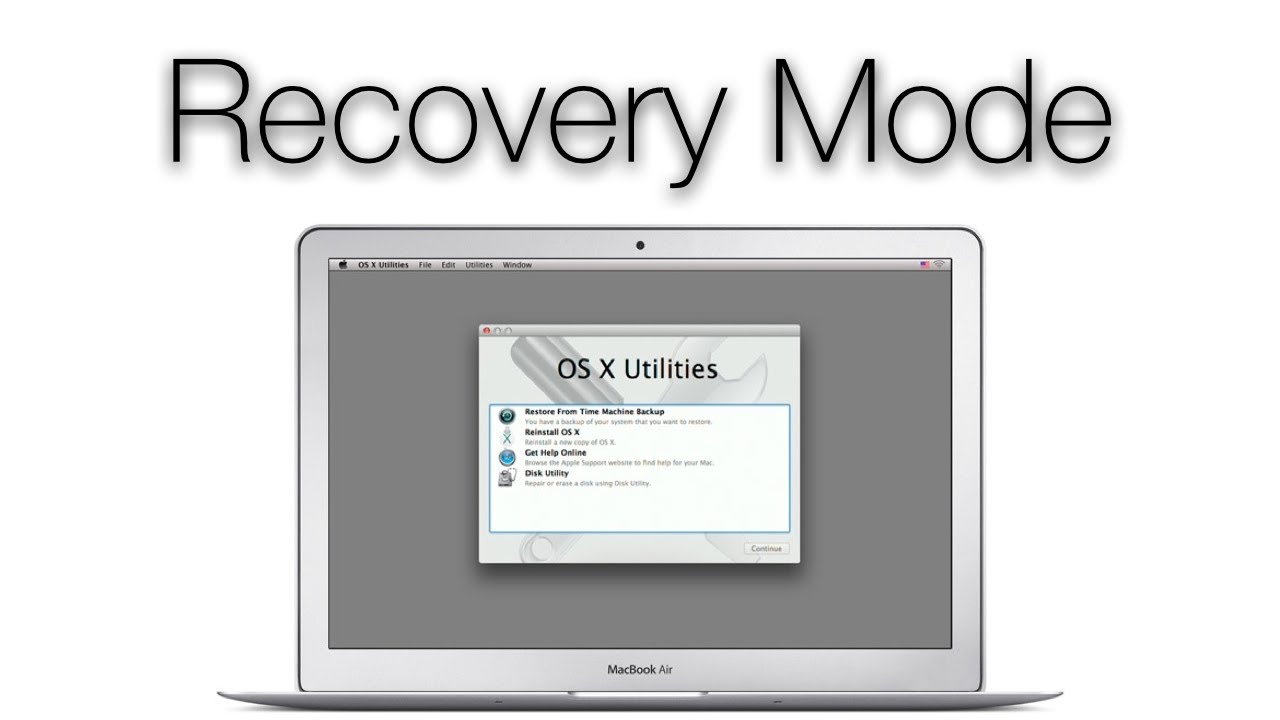

- #BOOT TO RECOVERY MAC OS MAC OS X#
- #BOOT TO RECOVERY MAC OS MAC OS#
- #BOOT TO RECOVERY MAC OS INSTALL#
- #BOOT TO RECOVERY MAC OS PASSWORD#
#BOOT TO RECOVERY MAC OS INSTALL#
after a lot of searching i found that reseting NVRAM may help, so it did (turn on the mac holding option (alt)+cmd+P+R), and after the long install process i was on MacOS Lion, and from there i updated to Sierra, and after that High Sierra. When i booted from the mac with the USB drive (push the power button on the mac and righ after push "cmd") it gave me another error and refused to install.
#BOOT TO RECOVERY MAC OS MAC OS#
Use a USB flash drive or other secondary volume to create a bootable installer.I managed to get it back up, i downloaded mac os lion 10.7.5 and i used transmac software to make a bootable USB drive with lion 10.7.5.dmg inside from my Windows 10 machine.ġ- get MacOS Lion (in my case) 10.7.5 (not older, because if its older you wont be abble to update it to Sierra)Ģ- get transmac trial software (15 day trial)ĥ- on transmac locate the USB drive, click right mouse button and click "format disk for mac"ħ-when it finishes formatting, click right mouse button again on the USB drive and click "restore with disk image"Ĩ- search and select the Macos Lion.dmg fileĩ- click "yes" and wait until it finishes (it may take a while).Use the App Store to download and install the latest macOS or an earlier macOS.You can also use these methods to install macOS, if the macOS is compatible with your Mac: If you just erased your entire startup disk, you might be offered only the macOS that came with your Mac, or the closest version still available.If the Mac logic board was just replaced, you might be offered only the latest macOS that is compatible with your Mac.Or you can use Option-Command-R during startup to be offered either the latest macOS that is compatible with your Mac, or in some cases the macOS that came with your Mac or the closest version still available. On an Intel-based Mac, you can use Shift-Option-Command-R during startup to be offered the macOS that came with your Mac, or the closest version still available.

#BOOT TO RECOVERY MAC OS MAC OS X#
Starting with Disk Drill 3, anyone can create a bootable Mac OS X drive in a matter of minutes. Itll make your Mac boot from USB in just a few clicks. Disk Drill is by far the most convenient and up-to-date macOS bootable file rescue solution. When you install macOS from Recovery, you get the current version of the most recently installed macOS, with some exceptions: Set it aside, calm down and download a bootable data recovery app using any other computer. In my case that is not possible because of clover. I found that when using real mac it can be done by pressing Command ()-R before the apple logo appears. When the new owner starts up the Mac, they can use their own information to complete setup. I have been using Time Machine and now for several reasons I would like to boot into macOS Recovery to restore from Time Machine backup. If you're selling, trading in, or giving away your Mac, press Command-Q to quit the assistant without completing setup. Your Mac might restart and show a progress bar several times, and the screen might be empty for minutes at a time.Īfter installation is complete, your Mac might restart to a setup assistant.
#BOOT TO RECOVERY MAC OS PASSWORD#
If the installer asks to unlock your disk, enter the password you use to log in to your Mac.

To begin installation, select Reinstall macOS from the utilities window in macOS Recovery, then click Continue and follow the onscreen instructions.įollow these guidelines during installation: Reinstalling macOS does not remove data from your Mac.


 0 kommentar(er)
0 kommentar(er)
